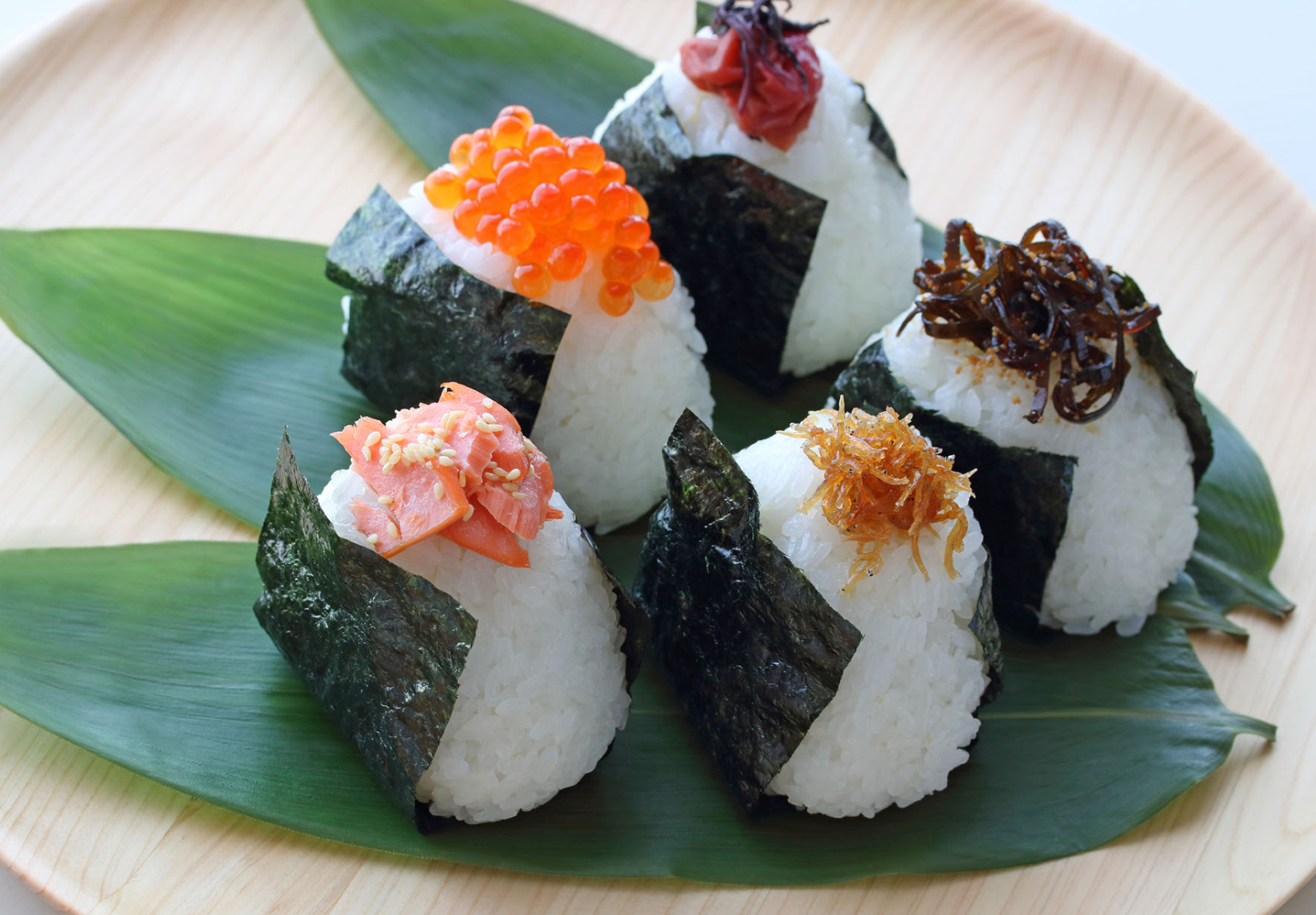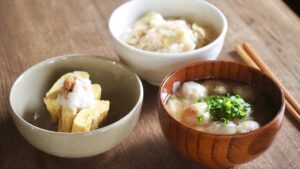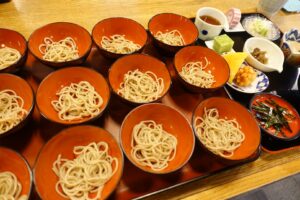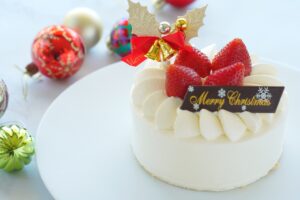Onigiri, omusubi, and nigiri-meshi are commonly found in bento boxes, convenience stores, and restaurants.

They are all made of cooked rice in a round or triangular shape to make it easier to carry.
There are various theories as to the origin of their names. There is no clear distinction between them, although they have different meanings and were used differently in different regions and historical backgrounds. In Japan today, there is no distinction or difference in usage, and people choose what to call it depending on the environment of their homes and businesses.
Differences by Historical Background
There are many theories about the differences in names, including shape, etymology, status, nigiri method, and regional differences.
Differences by Form
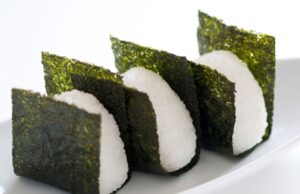
The “o” in “omusubi” is a polite word, but the “musu” in “musuhi” means to produce and the “hi” means divine spirit. In ancient Japan, rice ball was used as an offering to the gods. There is also a theory that rice ball, made into a triangular shape in the shape of a deified mountain, was called “omusubi” (rice ball).
Onigiri” is said to have changed from “nigiri(shaped)-meshi(rice)” to “onigiri,” with no particular shape in mind.
By meaning or etymology
Onigiri: “Onigiri” is a word to cut off(kiru) demons (Oni), from a folk tale of throwing rice balls to exterminate demons in the old days. It was said to be effective in driving away evil spirits and evil luck.
Omusubi: “お結びOmusubi” or “結yui” has the meanings of “connect,” “put together,” “create,” “solidify,” and “fasten. 湯結Yui” means to cooperate and help each other in agriculture, etc., and to be friends.]

Differences by status
Onigiri:Hand made rice ball
Omusubi: Wrapped in something such as bamboo leaves
Regional differences
Mainly, “Onigiri” is from Eastern Japan and “Omusubi” from Western Japan, but there are other theories as well, such as the opposit.
Differences by Convenience Store
Convenience stores are the most common places to buy onigiri and omusubi today. Major convenience stores in Japan have different names for their products.
- Seven-Eleven: Onigiri is a rice ball with nori wrapped around it just before eating. Omusubi are otherwise.
- FamilyMart: Omusubi (rice ball)
- LAWSON: Onigiri
- Daily Yamazaki: Omusubi
- Ministop: Onigiri
Shapes of Rice ball
There are various theories about the shape of rice balls.
Triangular Shape
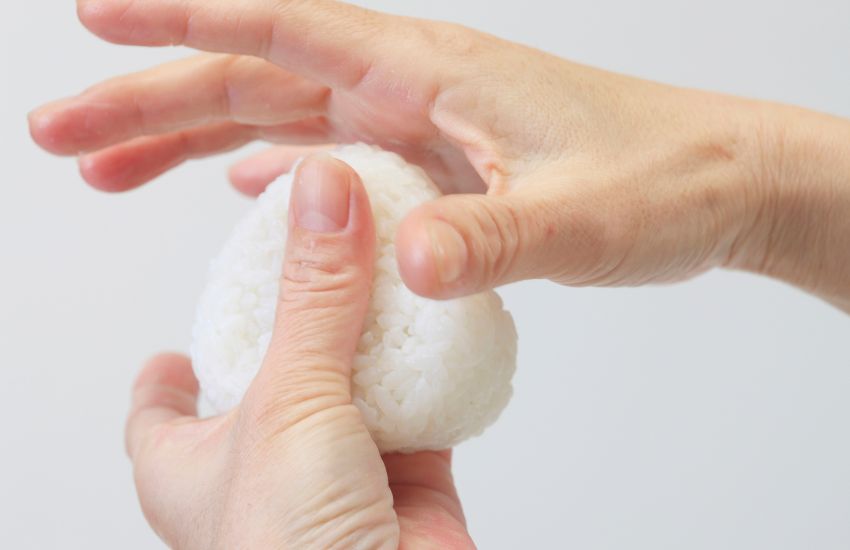
The triangular shape is said to have originated in the Kanto region. It is a shape that does not easily lose its shape and is easy to carry.
Today, the triangular shape is most commonly used because 7-Eleven started mass production of triangular rice balls in 1978.
Tawara Shape
In the Edo period (1603-1867), rice in bento boxes eaten between theatrical performances was bale-shaped. The main reasons were that it was easy to eat, easy to carry, and could be packed beautifully in a bento box.
In the Kansai region, the tawara shape is said to have become popular because it was easier to roll the long, thin, rectangular “seasoned nori” (seaweed).
Round and Disk Shapes
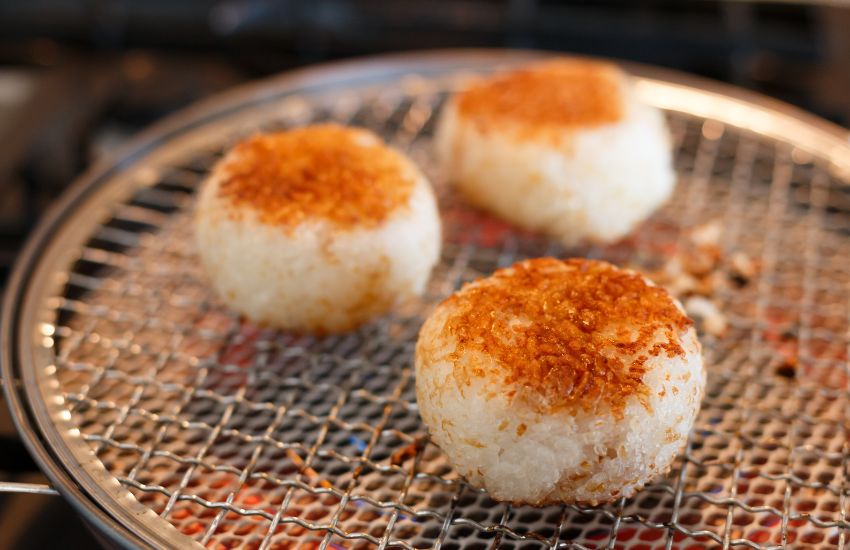
In the Tohoku region, rice balls were supposedly made in the shape of a disk and wrapped in a leaf to protect them from freezing in winter. Yaki onigiri,” grilled rice balls with soy sauce or miso paste on the surface to harden the surface, were also eaten without wrapping nori around the rice ball.
Onigirazu not rice balls
Onigirizazu is made by layering rice like a sandwich instead of forming it. Layer seaweed(nori), rice, ingredients, rice, and seaweed on a piece of plastic wrap. Or, place nori, rice, and ingredients on a piece of plastic wrap and fold in half.
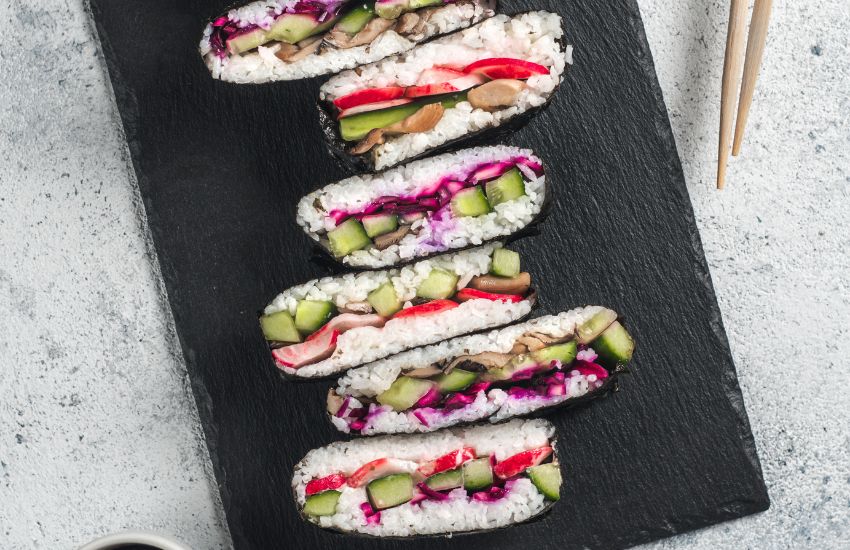
It is now very popular as a home lunch box because it does not require holding hot, freshly cooked rice, has a wide variety of ingredients, and is flat and easy to eat.
<!>Onigiri and omusubi come in a wide variety of shapes and ingredients, depending on the region and store. Enjoy the look and taste!
👉Feel free to contact us if you have any questions.

